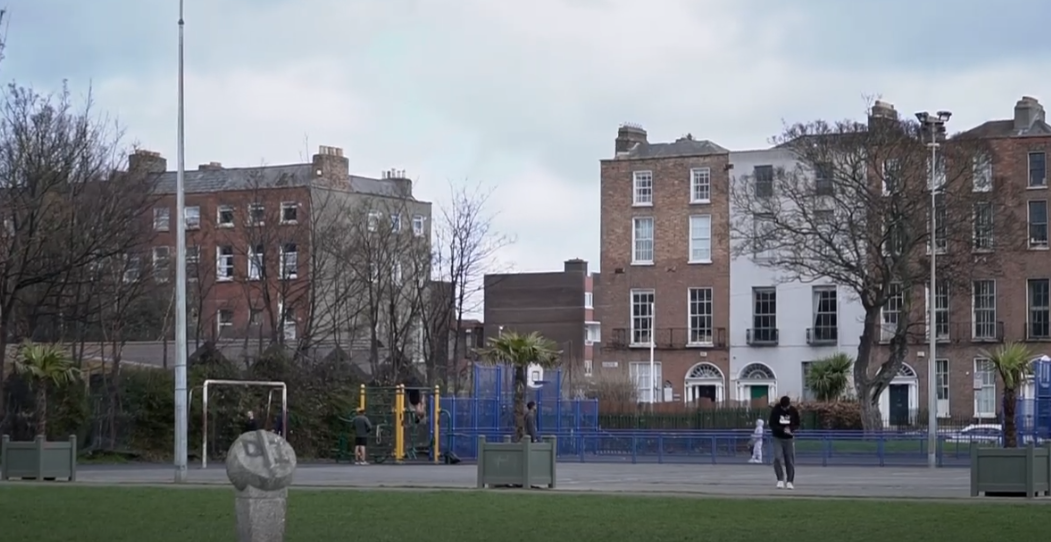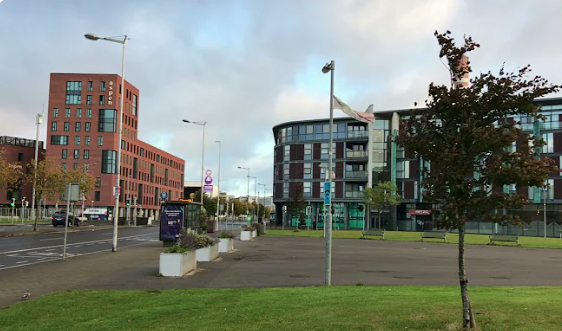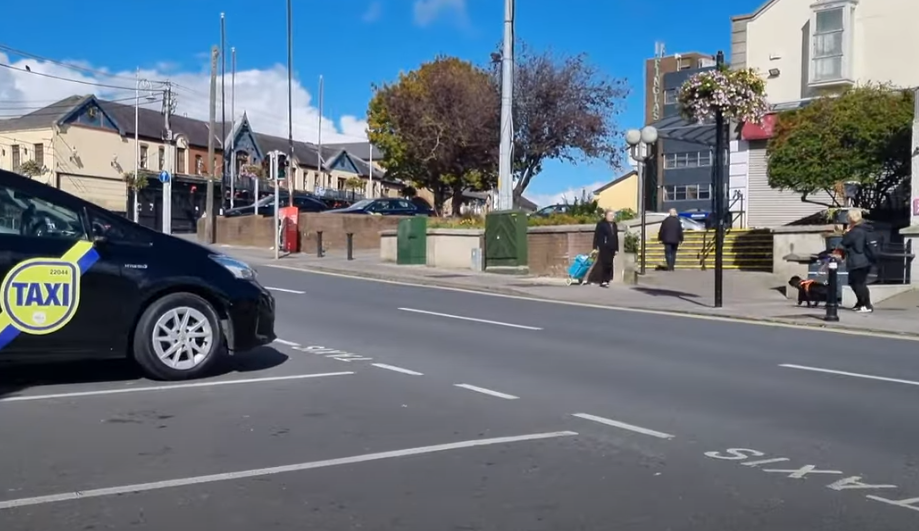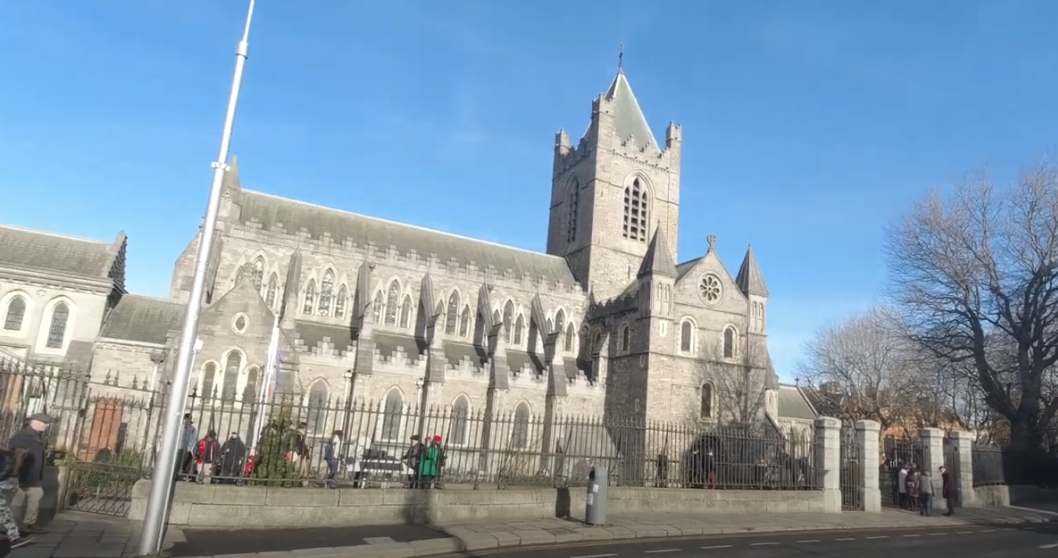You should avoid Ballymun, Finglas, Temple Bar (late at night) and parts of the North Inner City when visiting Dublin. These neighborhoods have higher crime rates and can be unsafe, especially at night. Being aware of these places can help ensure a safe and enjoyable trip. Other areas to steer clear of include Ballyfermot, Darndale, and certain parts of Tallaght. Knowing which areas to avoid is crucial for anyone planning to explore Dublin.
During my last visit to Dublin, I learned the importance of sticking to well-lit, populated areas near tourist attractions. I avoided places like Ballyfermot and Darndale, especially after dark. Staying in safer neighborhoods allowed me to enjoy the city's charm and tourist attractions without worry. Dublin is beautiful, but a little caution goes a long way in ensuring a pleasant experience.
Top 5 Areas to Avoid in Dublin
You should avoid these 5 areas in Dublin, Ireland, especially during specific times, to ensure your safety and comfort. Here are some areas to be cautious about:
-
Temple Bar (late at night): This popular tourist spot can become overcrowded and rowdy late at night, with high levels of drunken behavior and potential for petty crimes.
-
O'Connell Street (after dark): While bustling during the day, O'Connell Street can see incidents of petty crime and occasional anti-social behavior after dark.
-
North Inner City: This area has higher crime rates and is generally less tourist-friendly, with reports of thefts and muggings.
-
Ballymun: Known for its economic challenges, Ballymun has higher crime rates and can be unsafe, especially for tourists unfamiliar with the area.
-
Dublin 8 (certain parts): Reason to Avoid: Some parts of Dublin 8 have safety concerns, including lower levels of security and higher instances of anti-social behavior.
| Areas To Avoid in Dublin | Reason to Avoid |
|---|---|
| Temple Bar (late at night) | Can be overcrowded and rowdy with high levels of drunken behavior |
| O'Connell Street (after dark) | Incidents of petty crime and occasional anti-social behavior |
| North Inner City | Higher crime rates and less tourist-friendly |
| Ballymun | Known for economic challenges and higher crime rates |
| Dublin 8 (certain parts) | Some areas have safety concerns and lower levels of security |
Which Areas Have Higher Crime Rates in Dublin?
In Dublin, the areas identified with higher crime rates are North Inner City, Ballymun, Finglas, and Dublin 8. According to the Central Statistics Office, these districts are known for a higher incidence of theft, assault, and drug-related offenses compared to other parts of the city. In particular, the North Inner City has been noted for its challenging socio-economic conditions and drug abuse, which contribute to its crime statistics. The Dublin City Council is actively working to address these issues.
Ballymun and Finglas, both located on the northside of Dublin West, also experience similar issues with crime, often linked to gang activities and social unrest. Dublin 8, although rich in history and culture, struggles with crime related to vandalism and burglaries. Talbot Street, in particular, has been mentioned in reports regarding safety concerns.
Residents and visitors are advised to remain vigilant, especially after dark. It is crucial to be aware of your surroundings and avoid isolated or dangerous areas. The Irish Police Force, in collaboration with local authorities, has implemented several measures to improve safety, including increased police patrols and community engagement programs. However, caution should still be exercised while navigating these neighborhoods to ensure that Dublin remains safe. For those planning to visit Dublin, these precautions are essential for a secure experience.
North Inner City

The North Inner City is one such area known for its elevated crime statistics compared to other parts of Dublin. This locality, despite its vibrant history and close proximity to Dublin's bustling city center, often figures in discussions about safety due to higher incidences of petty and sometimes serious crimes.
Many residents and visitors often share advice on being extra cautious, especially after dark, highlighting the importance of vigilance in this part of the the city centre.
Interestingly, the North Inner City is also where you'll find some of Dublin's most colorful street art and the birthplace of several famous Irish musicians. It's a place of stark contrasts, embodying both the city's artistic spirit and its urban challenges.
Ballymun

Ballymun is known for having higher crime rates, with particular issues related to anti-social behavior and drug-related activities. As one navigates through the quieter, more subdued streets of Ballymun, especially during the evening hours, there's a palpable sense of caution that contrasts sharply with the vibrant and bustling atmosphere of Dublin’s city center.
This area, while facing challenges, is also a place of cultural significance. It was famously featured in the Irish film "The Commitments," which highlighted its unique character within the broader tapestry of Dublin’s urban landscape. Beyond its portrayal in media, Ballymun has a strong community spirit. Local initiatives are continuously being developed to improve safety and community engagement, aiming to transform the neighborhood into a safer and more inviting place.
Community centers and local projects focus on youth engagement and employment opportunities to counter the prevailing issues. These efforts are part of a broader redevelopment plan that includes enhancing public spaces and providing better housing options to residents. The aim is to not only change the physical landscape but also to foster a more inclusive and supportive community environment.
Despite its past, Ballymun’s ongoing transformation offers a hopeful glimpse into its future, underscoring the resilience and potential of its community to overcome its struggles and reimagine a better neighborhood for all its residents.
Finglas

Finglas, located on Dublin’s north side, is recognized for its higher crime rates compared to other areas in the capital city itself. This makes it a place to be cautious about, especially during nighttime. The neighborhood, however, isn't just defined by these statistics; it also hosts the ancient Finglas Abbey, dating back to the 7th century, showcasing the area's deep historical roots.
During my walks in Finglas, the striking contrast between the vibrant local markets and the historic ruins resonates deeply. It's a reminder of Dublin's complex urban tapestry, blending rich history with ongoing community efforts to rejuvenate. Despite the challenges, there's a visible growth and hope that pervades the area, suggesting a brighter future might be on the horizon.
Dublin 8

Dublin 8, known for its rich history and vibrant culture, also records higher crime rates, making it a less desirable area for some residents and visitors. This district includes historical sites like Kilmainham Gaol and the Guinness Storehouse, which attract numerous tourists annually. Despite its cultural allure, I've often heard locals advise newcomers to be cautious, especially at night due to the increased incidents of petty and sometimes serious crimes.
During my last visit, while enjoying the eclectic food markets near St. Patrick's Cathedral, I was advised by a friendly vendor to keep a close eye on my belongings. This area's dual nature is intriguing yet serves as a cautionary tale to those unfamiliar with its streets. Such contrasts between historical significance and contemporary challenges create a unique atmosphere that's both educational and cautionary.
Which Areas To Avoid in Dublin at Night?
When visiting Dublin one should avoid North Inner City, Ballymun, & Clondalkin at night. It's important to enjoy the city's rich history, vibrant nightlife, and cultural offerings safely. While Dublin is generally a safe city, like any large urban area, there are neighborhoods that might be less safe at night. Knowing which areas to avoid after sunset can help you plan a secure and enjoyable trip.
Visitors should be particularly cautious in certain areas dublin city centre where the risk of encountering trouble is higher. Areas with frequent reports of anti-social behavior or crime warrant extra vigilance. Below are specific neighborhoods in Dublin that are advisable to steer clear of during the night hours.
North Inner City
In Dublin, the areas identified with higher crime rates are North Inner City, Ballymun, Finglas, and Dublin 8. These districts are known for a higher incidence of theft, assault, and drug dealing compared to other parts of the city. In particular, the North Inner City has been noted for its challenging socio-economic conditions and drug abuse, which contribute to its crime statistics.
Ballymun and Finglas, both located on the northside of Dublin, also experience similar issues with crime, often linked to gang activities and social unrest. Dublin 8, although rich in history and culture, struggles with crime related to vandalism and burglaries.
Residents and visitors are advised to remain vigilant, especially after dark. It is crucial to be aware of your surroundings and avoid isolated or dangerous areas to stay Dublin safe. The local authorities have implemented several measures to improve safety, including increased police patrols and community engagement programs. However, caution should still be exercised while navigating these neighborhoods.
Ballymun
Ballymun, located north of Dublin city center, has historically been known for higher rates of crime compared to other neighborhoods. Despite efforts at regeneration, it still faces challenges with anti-social behavior and sporadic incidents of drug-related activities. The area's reputation, shaped by past decades of socioeconomic difficulties, includes a presence of graffiti and poorly lit streets which can make night-time navigation feel unsafe for visitors and residents alike.
Travelers are advised to be particularly vigilant if they find themselves in Ballymun after sunset. Opting for well-populated and better-lit areas when exploring Dublin at night is recommended for a safer experience.
Clondalkin
Clondalkin is an area in Dublin that is advisable to avoid at night. This region experiences higher than average crime rates, particularly involving theft and assault. The presence of gang activities and drug-related problems contributes to its reputation for being less safe after dark. Local police records often cite higher incidents of nighttime crime in Clondalkin compared to other, more residential areas of Dublin. For safety, it is recommended that both tourists and residents remain vigilant, stick to well-lit and busy streets, and steer clear of lesser-known pathways or parks during late hours.
Which are the Safest Areas in Dublin?
The safest areas in Dublin offer residents a secure and peaceful environment, making them highly desirable places to live. These neighborhoods are characterized by low crime rates, well-maintained public spaces, and strong community spirit. They are also known for their excellent amenities, including schools, parks, and transport links. Living in these areas provides peace of mind and a high quality of life, which is why they are popular among families, professionals, and expatriates alike. Below, we explore some of the safest areas in Dublin, each with its own unique charm and advantages.
Ballsbridge
Ballsbridge is a prestigious neighborhood known for its affluence and exclusivity. It boasts wide, tree-lined streets and is home to several embassies, giving it a cosmopolitan vibe. The area features high-end hotels, gourmet restaurants, and luxury shopping. Ballsbridge also has excellent public transport links and is close to the city center, making it a convenient place to live. The presence of international embassies and well-off residents contributes to its low crime rates and secure environment.
Donnybrook
Donnybrook is a well-established and affluent area with a strong community feel. It features large family homes, excellent schools, and a range of local amenities. The area is known for its green spaces, including Herbert Park, which is popular for family outings and recreational activities. Donnybrook's reputation for safety is bolstered by its active community groups and vigilant neighborhood watch programs. Its proximity to the major city, center and major business districts makes it a favorite among professionals and families alike.
Sandymount
Sandymount is a coastal suburb with a charming village feel. It has a strong community spirit, with local events and markets regularly held in the village square. The area is known for its beautiful beaches and scenic walks along Sandymount Strand. Excellent schools and recreational facilities add to its appeal, making it a great place for families. The low crime rate and friendly atmosphere make Sandymount one of the safest and most desirable places to live in Dublin.
Ranelagh
Ranelagh is a trendy, vibrant neighborhood popular with young professionals and families. It boasts a lively café culture, with numerous restaurants, bars, and boutique shops lining its streets. Ranelagh has excellent public transport links, including a Luas (tram) line that provides quick access to the city center. The area is known for its community spirit and active neighborhood associations, which contribute to its safety and well-being. With its mix of urban amenities and residential charm, Ranelagh is a highly sought-after area.
Clontarf
Clontarf is a seaside suburb known for its parks, sports clubs, and scenic coastline. The area offers a relaxed atmosphere and a strong sense of community, making it a safe and pleasant place to live. St. Anne's Park, one of Dublin's largest public parks, is located in Clontarf and provides ample space for outdoor activities. The suburb also has good schools and convenient transport links to the city center. Clontarf's safety and quality of life make it an attractive option for families and professionals.
Blackrock
Blackrock is a well-established suburb that offers a blend of urban and suburban living. It is known for its good schools, shopping centers, and low crime rates. Blackrock has a vibrant village center with a range of shops, cafés, and restaurants. The area also features beautiful parks and coastal walks, providing plenty of recreational opportunities. With its excellent amenities and strong community, Blackrock is considered one of the safest and most desirable places to live in Dublin.
Malahide
Malahide is a picturesque village known for its historic castle, marina, and beautiful parks. It has a strong sense of community, with local events and festivals regularly taking place. The area offers a range of recreational activities, including sailing, golf, and scenic walks. Malahide's excellent schools and amenities make it a popular choice for families. The village's friendly atmosphere and low crime rate contribute to its reputation as one of Dublin's safest areas.
Howth
Howth is a scenic fishing village located on the Howth Peninsula. It offers stunning views, outdoor activities, and a relaxed, small-town feel. The village is known for its fresh seafood restaurants, hiking trails, and historic landmarks. Howth has a close-knit community and a low crime rate, making it a safe and welcoming place to live. The area's natural beauty and tranquility attract both residents and visitors, making it one of Dublin's most charming and secure suburbs.
How to Stay Safe While Visiting Dublin?
Staying safe while visiting Dublin involves being aware of your surroundings and taking some precautions. While Dublin is generally safe, certain areas may have higher crime rates or be less safe at night, such as parts of the North Inner City and specific neighborhoods like Ballymun and Darndale. Being cautious can help you avoid potential risks. Here are some tips to ensure your safety:
-
Stick to well-lit, busy streets, especially after dark: Avoid walking alone in dimly lit or deserted areas. Stick to main roads where there are more people and better lighting.
-
Avoid displaying expensive items like jewelry: Keep your valuables out of sight to avoid attracting unwanted attention. Use a money belt or a secure bag for your belongings.
-
Use taxi services or public transportation: Opt for licensed taxis or well-known ride-hailing services. When using public transport, be aware of your surroundings and know the route.
-
Be cautious in crowded areas to avoid pickpocketing: Tourist spots, markets, and public transport can be hotspots for pickpockets. Keep your bag closed and in front of you, and be vigilant if someone bumps into you.
-
Keep your belongings secure and close to you: Use anti-theft bags with secure zippers and compartments. Avoid placing bags on the back of chairs in cafes or restaurants.
-
Leave any place where you feel uncomfortable: If a place or situation feels off, trust your gut and remove yourself from it. It’s better to be safe and move to a more populated area.
-
Stay informed about local safety information: Check local news or official websites for any safety advisories or updates. Following local advice can help you stay informed about areas to avoid or situations to be aware of.
By following these simple steps, you can enjoy your time in Dublin without worrying about your safety. Remember, staying alert and prepared is key to a hassle-free visit. While the city has its areas of concern, most tourists have a positive experience when they take the necessary precautions. Enjoy the rich culture, vibrant nightlife, and historic sites Dublin has to offer with confidence.
FAQs On Areas to Avoid in Dublin
1. What areas should tourists avoid in Dublin?
Tourists should avoid certain parts of Dublin, particularly late at night. Areas like Ballymun, North Inner City, and Finglas are known for higher crime rates. Stick to well-lit, populated areas to stay safe.
2. Are there the most dangerous areas or neighborhoods in Dublin?
Yes, there are dangerous neighborhoods in Dublin. Ballyfermot, Darndale, and parts of Tallaght have reputations for crime. Exercise caution and avoid these areas, especially after dark.
3. Is Dublin city center safe for tourists?
Dublin city center is generally safe for tourists. However, be cautious around O'Connell Street and Temple Bar late at night due to potential for petty crimes. Stay alert and avoid isolated spots.
4. Are there any places in Dublin with high crime rates?
Yes, certain places in Dublin have high crime rates. Areas like Blanchardstown, Clondalkin, and Cherry Orchard are known for higher crime. It's best to avoid these neighborhoods.
5. Should I avoid walking alone at night in Dublin?
Yes, you should avoid walking alone at night in Dublin. Stick to busy, well-lit streets and use reputable transportation options. This ensures your safety and peace of mind.
6. How can I stay safe while exploring Dublin?
To stay safe while exploring Dublin, avoid high-risk areas like Ballymun and Finglas. Use public transportation, stay in groups, and keep your belongings secure. Always be aware of your surroundings.
7. Are there any specific streets to avoid in Dublin?
Specific streets to avoid in Dublin include certain parts of O'Connell Street and Gardiner Street. These areas can be sketchy, especially at night. Stick to main thoroughfares and tourist-friendly spots.
8. Is Temple Bar a safe area in Dublin?
Temple Bar is generally safe but can be rowdy and prone to petty crime at night. Keep an eye on your belongings and avoid isolated alleyways. It's a popular tourist spot, so stay vigilant.
9. Are there any unsafe suburbs in Dublin?
Yes, some suburbs in Dublin are unsafe. Suburbs like Ballyfermot, Coolock, and Jobstown have higher crime rates. Exercise caution if you need to visit these areas.
10. What precautions should I take while visiting Dublin?
While visiting Dublin, avoid known trouble spots like North Inner City and Ballymun. Stay in well-populated areas, use reputable transportation, and keep your valuables secure. Always stay aware of your environment.
